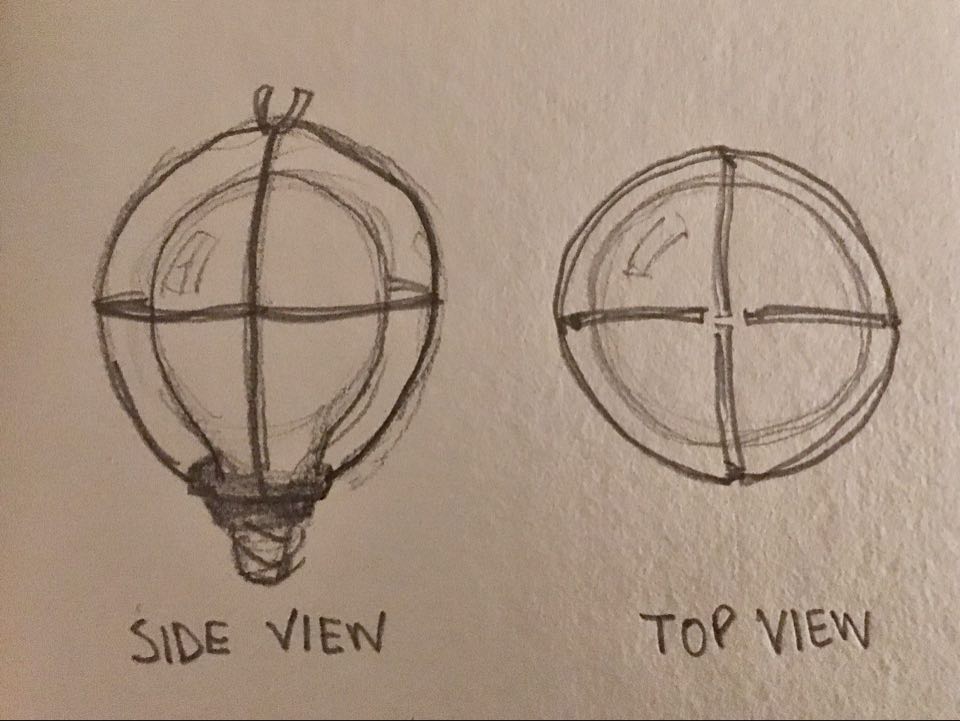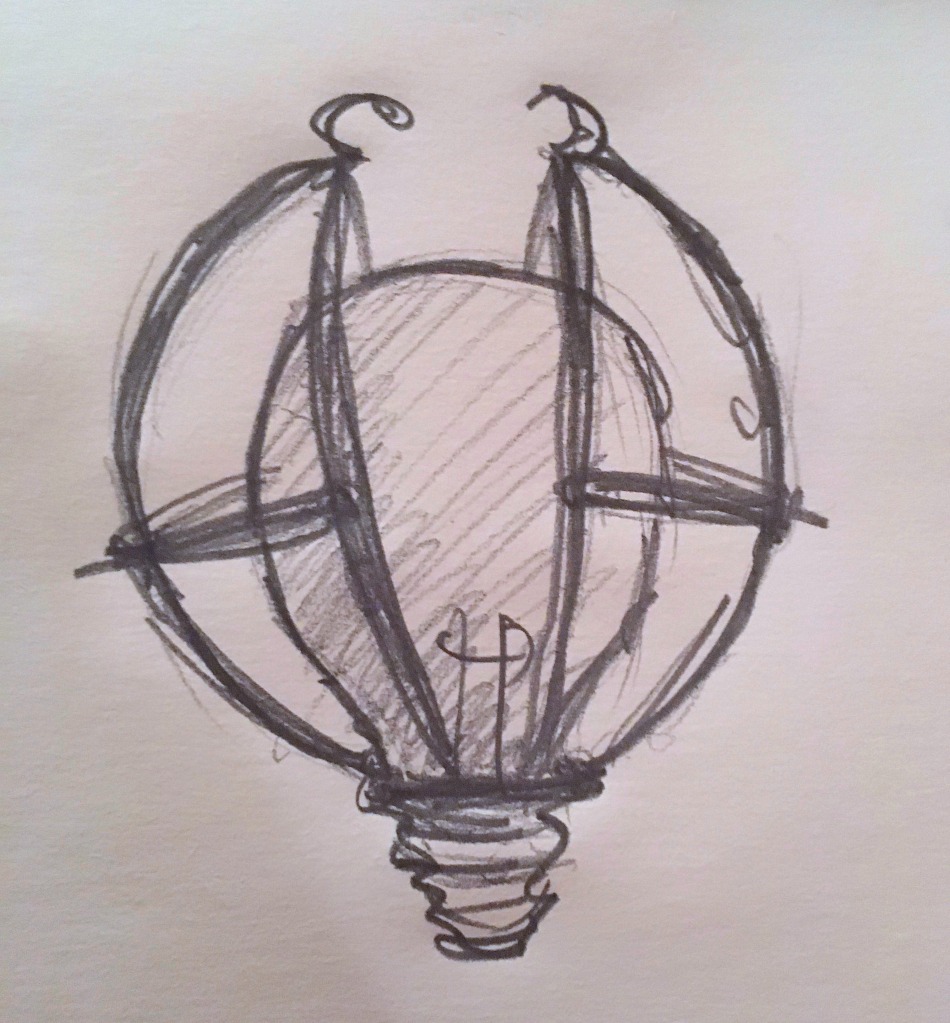For this task I had to design a new kind of packaging for a light bulb, using the SCAMPER-method.
Substitute something
Combine it with something else
Adapt something to it
Modify or Magnify it
Put to other uses
Eliminate something
Reverse or Rearrange it
I used parts of the method to land a first idea, based on what I consider to be the classic light bulb packaging. After that, I used some of the SCAMPER-techniques to take my idea further.
FROM MY OWN EXPERIENCE
A problem I’ve encountered myself when buying standard light bulbs, is that I once in a while get the wrong socket-type: sometimes I buy a light bulb with a small socket when I actually needed the big one and vice versa. Since there are several factors to take into consideration when searching for the right light bulb — like watts, lumens, finding the right type of bulb, etc. — I think the size of the socket is something that is easily overlooked. Therefore, for my own package design, I wanted to make it easy for the customer to see what kind of socket the light bulb has.
Another important factor for me when buying light bulbs is the color of the light. I’m always looking for the red “warm” light, but I often find it hard to figure out what kind of light the bulb emits just from the description on the packaging.
BASE IDEA
My base idea was to have a minimalistic packaging where the socket type is clearly recognisable for the customer. I also wanted to find a way for the customer to know the exact color of the light the bulb emits.
S – Substitute
To solve the problem of unclear socket-sizes, I would have to substitute the standard cardboard packaging — that only has a print or illustration of the light bulb — with a packaging that would not cover the bulb’s socket.
C – Combine
The packaging will, of course, act as a protection for the fragile light bulb during transport, but is often thrown away after the light bulb is taken out. For my packaging design, I wanted to combine the usage of the packaging with something more. Sometimes light bulbs will be put places where they are more vulnerable, with a greater risk of getting broken. I figured the packaging could act as protection for the light bulb, even after the light bulb is put to use. I also wanted the packaging to act as a decorative element. Here, I took inspiration from lamp shades that I’ve seen a lot of in recent years, where the bulb itself is fully visible:

A – Adapt
To make it easier for the customer to see what kind of light the bulb emits, I wanted to make it possible to test the light bulb at the store, before buying it. The customer would have to be able to do this without opening the packaging. Again, the socket had to be uncovered by the packaging.
E – Eliminate
I wanted the packaging to be as simple as possible, eliminating all unnecessary material usage. Therefore, the packaging could not be the standard see-through plastic packaging, but would still have to be transparent.
THE “CAGE” PACKAGING
The idea I landed on was to make some sort of protective “cage” around the bulb. This would make the bulb itself clearly visible for the customer, while still protecting it. The packaging would only be attached to the light bulb at the area where the socket meets the bulb. Thus, the socket would be sticking out, and it would be possible to screw the light bulb on a lamp holder without taking off the packaging.
The “cage” packaging would not block the light emitted from the bulb, and could therefore be left on while the light bulb is in use, allowing the light out from the packaging, and act as both protection and decoration.
As previously mentioned, I wanted to eliminate all unnecessary material usage for the packaging. With the “cage” packaging, the material usage would be reduced to a minimum.
In my first sketch of the packaging design I wanted to communicate my idea as simple as possible, showing the “cage” packaging containing the bulb. The sketch below shows the core of my packaging design.

The opening I imagined to be on the top of the packaging, with some sort of click-system. The packaging would be split in half when opened, and then you unscrew the bulb from the bottom of the packaging.

IMPROVING THE IDEA
A – Adapt
With the socket of the light bulb not being covered by packaging, I imagined the possibility of the store having a “station” of lamp holders where the customer could test their light bulb before buying it by screwing it in. Much like you can test a pen on a piece of paper before you buy it. This solves the color-of-the-light-problem by allowing the customer to see the exact kind of light their bulb emits, whether it is cold or warm, red or white, before buying it.
P – Put to other uses
Because light bulbs come in standardised sizes, the packaging (which is only attached by the socket) would be reusable on many other bulbs with the same socket-type, also from other manufacturers. For the packaging to protect the light bulb while just being attached to the socket, it would have to be made out of stiff plastic or some kind of metal. Being made out of a more robust material, the packaging could also be used for other storing and protective purposes.
E – Eliminate
On many existing light bulb packages there is a lot of written information. I think that this also adds up to the confusion customers, like myself, sometimes experience when buying light bulbs. Therefore I wanted to eliminate most of the text that appears on the classic packaging.
M – Modify or Magnify
My idea was to attach a single paper-tag (like on a tea-bag) to the packaging, with the most important information (like the amount of watts and lumens) described on one side, and a QR-code that would link the rest of the information about the light bulb on the other side of the tag. This way, the amount of material spent for producing the packaging would also be reduced.
R – Rearrange
At last, the “cage” packaging doesn’t have to be the shape of the light bulb, but could be made in different shapes and styles. Since the packaging would act as a decorative piece on its own, it would be possible to make some sort of collection out of the different styles of packaging, for the customer to collect.
